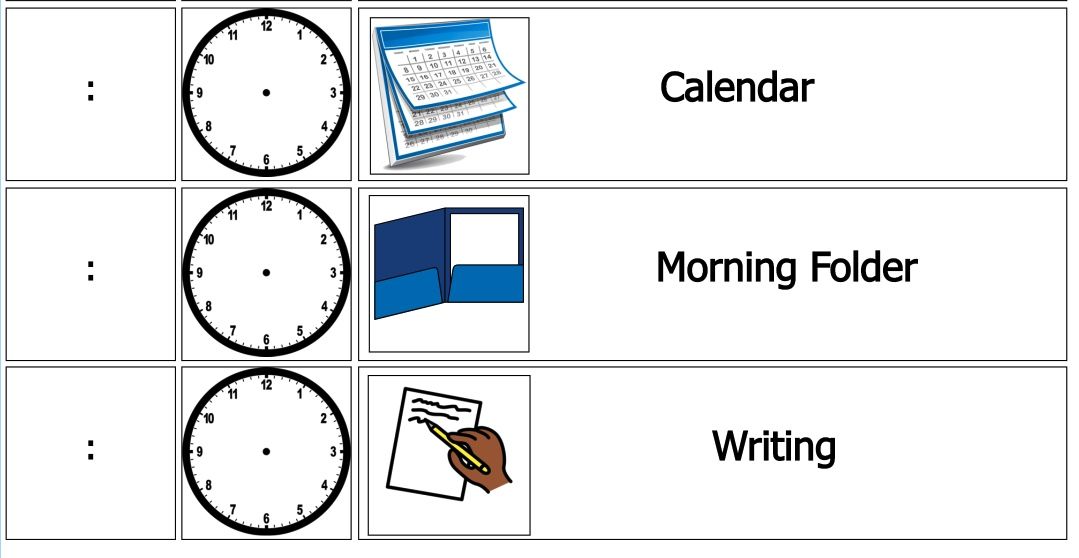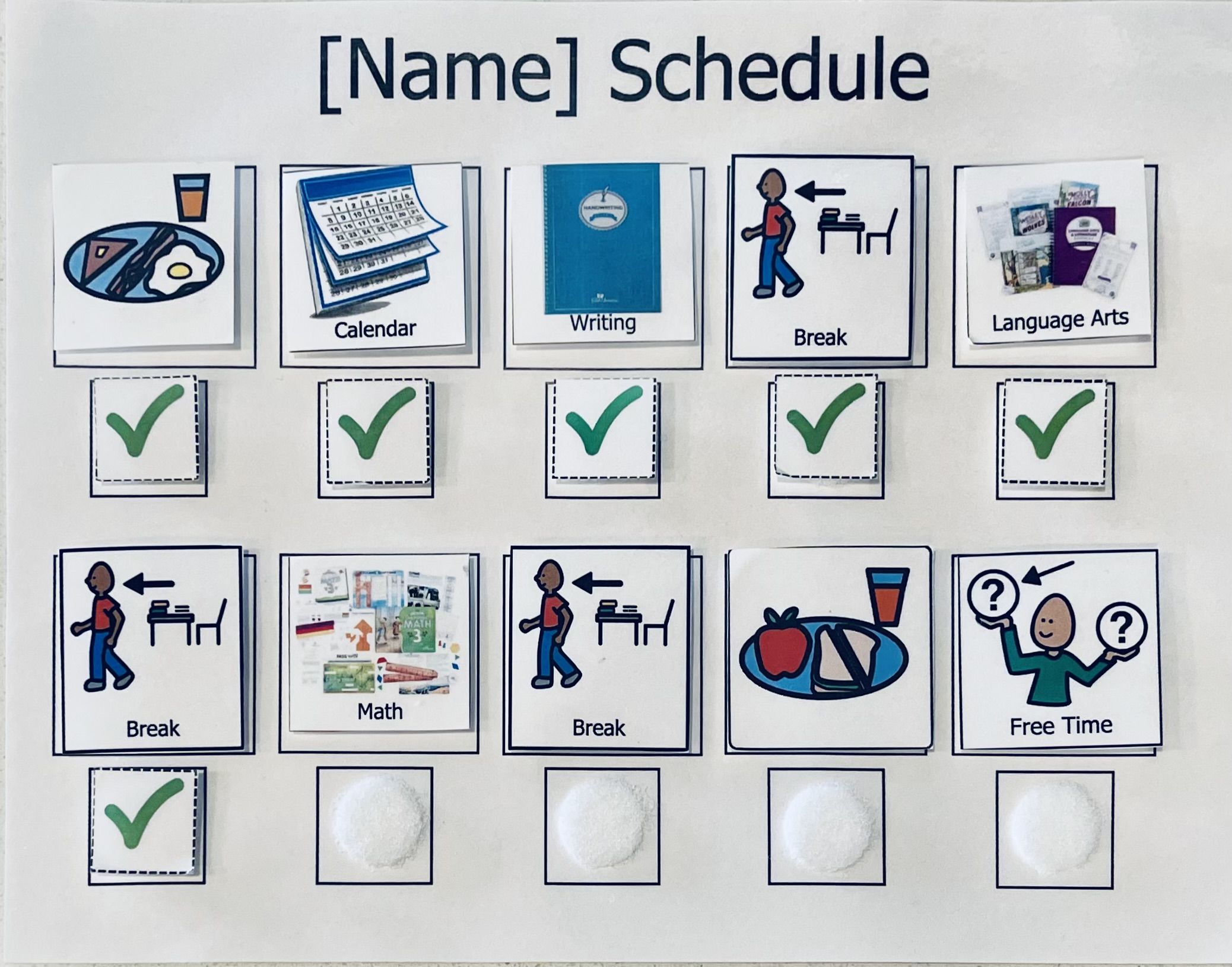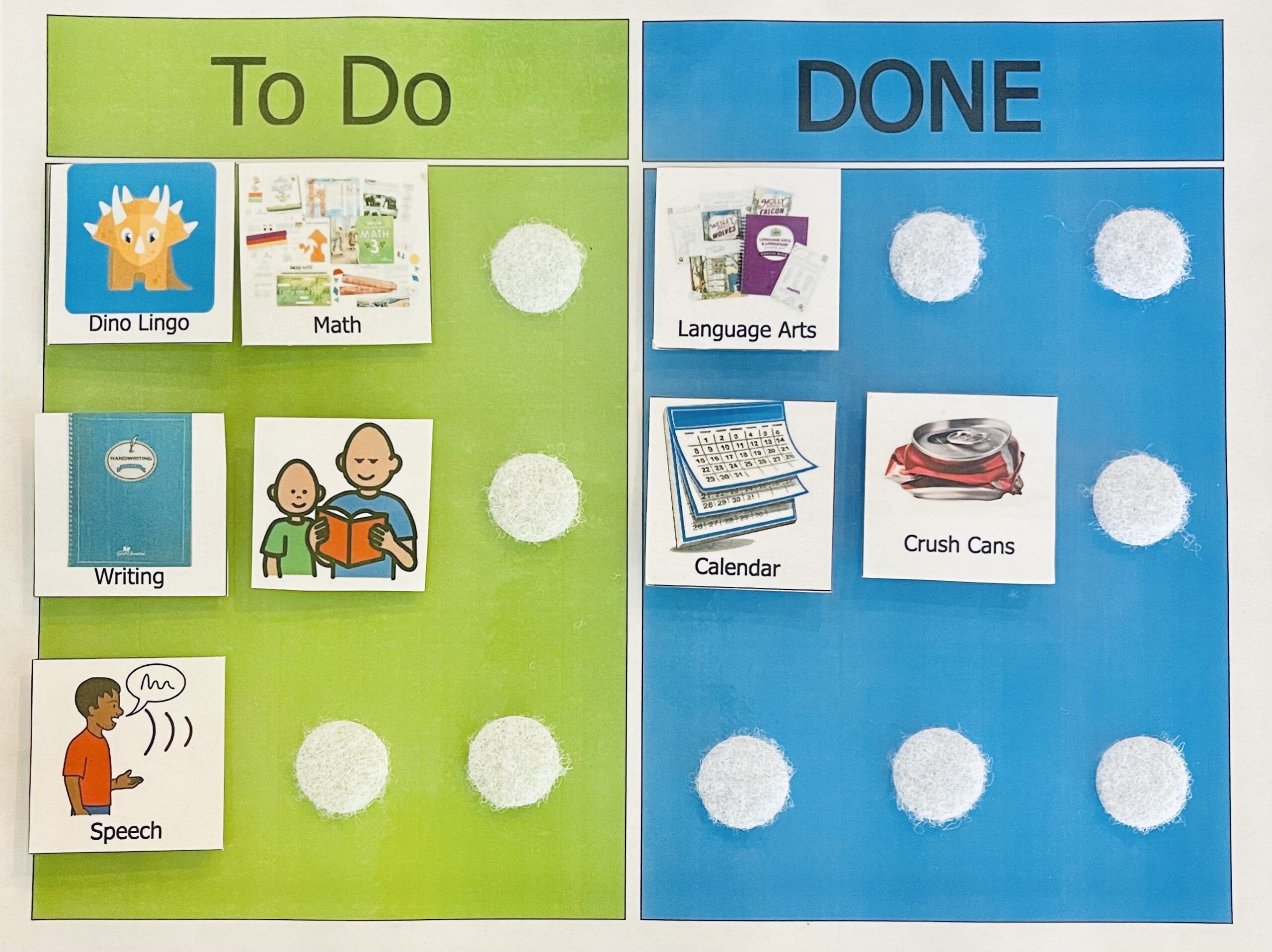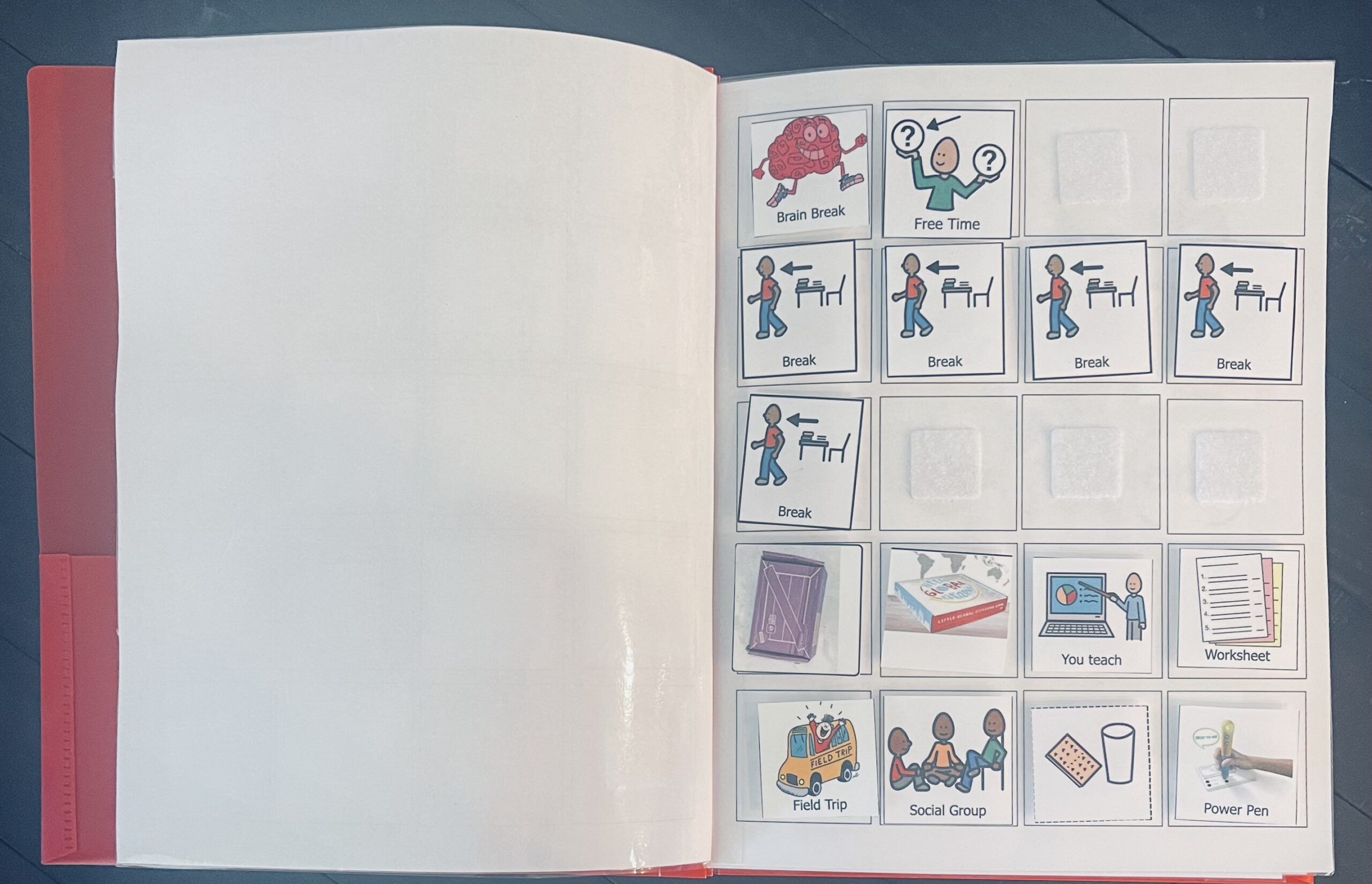Picture Schedules
A picture schedule is a tool that helps children with autism understand what is going to happen that day by using a series of pictures, symbols, and simple words. It is a visual representation to help the child understand what is happening, the sequence of events, what changes may be occurring, or when it is time to stop an activity and move on to another.
Picture schedules can include meals, academics, play time, appointments, chores, and are customized to each individual. They can include photos of family members, service providers, teachers and places in the community.
Some picture schedules are created and organized by what time it is. Others, are organized only by the sequence of activities.
I homeschool my son and find that we thrive best when the picture schedule is created to show the order of activities and not what time the activity occurs. It allows for the most flexibility. It works well with our homeschool loop schedule.
I used a picture schedule that was organized by the time, like the one pictured below, while he was learning how to tell time. It was helpful. But, once that skill was mastered, I returned to our usual picture schedules which simply show the sequence of activities.
I also used schedules organized by time, when I was teaching in a school. It was helpful, because our schedule was based on time. I used strips with symbols, words and clock faces that were kept on the white board with magnets (like the ones pictured below).

Who benefits from using picture schedules
Individuals with:
- Autism
- Expressive & Receptive Language Delays
- ADHD
- Anxiety
- Sensory Processing Difficulties
- Executive Functioning Disorder
- Cognitive Impairments
- Memory Challenges
Even young children can benefit from a picture schedule.
how do picture schedules help
reduces anxiety
Visual schedules are particularly helpful for individuals who have a difficult time with changes by helping them understand their day. It alleviates anxiety by providing predictability and letting individuals know what to expect.
It allows them to see everything they will be doing and what is coming next. This is particularly helpful when there are activities that may be difficult. Seeing that there is an end to the activity or that there is a break after, helps to reduce anxiety.
Using picture schedules, like the one below, during our homeschool hours have been very helpful for my son. Without a picture schedule, I may hear these questions:
- When is my next break?
- How many things do I need to do?
- Is it a normal Tuesday?
- I forgot I had that today!
These questions are usually asked with a great deal of anxiety and often accompanies tears. I heard them often, before we started using a picture schedule. If I don’t have the schedule ready, he will ask for it before we start school. There is no mistaking that the picture schedules help reduce his anxiety and provide a structure to his day that he relies on.

I have seen a few things, here and there, regarding a concern about the over reliance on picture schedules that may develop from using them. It is not a concern for me. I have a planner that contains my schedule, my son’s homeschool schedule, my budget, birthdays, meal planning and more. I also have an app (Cozi) on my phone that does much of the same. One could say that I have an “over reliance” on my planner and app. In fact, my husband says that my planner is my hobby. I would forget all my appointments and be a hot mess without them. But, they didn’t create that scenario. It existed before I implemented their use. In fact, that is precisely why I have them. They are tools that help me to manage my schedule. I don’t ever plan or aspire to be organized enough to not have to need them. I know I need them.
My son may someday transition from picture schedules to a planner. My hope is that he continues to use some type of scheduling tool. I think we all may know someone who we wish would use one. So, I don’t see it as a potential problem of over-use.
provides support for transitions
Picture schedules are vital tools for individuals that have a difficult time with transitions. They make transitions between activities easier because there is no guessing about what is happening next. Placing a “mark” when activities are completed, helps the individual follow along and provides a sense of stability. They are prepared.
Individuals with autism can struggle with flexibility. Transitioning from a preferred to a non-preferred activity can result in a meltdown. It isn’t unusual to experience transitioning difficulties when telling a child it’s time to stop what they are doing and get ready for bed. It usually isn’t received with excitement. Individuals with autism often struggle with transitions all through their day, not just at bedtime.
Pairing a picture schedule with a visual timer has worked wonders for my son. He knows when his breaks will be and he knows he gets 10 minutes for his breaks. He will get his timer and set it independently. Most of the time, with a picture schedule and a visual timer, he is able to transition smoothly between activities.
Picture schedules can provide motivation by indicating when a preferred activity will be occurring. For example, if my son is having difficulty beginning Math and is resisting. I can direct him to his picture schedule and he can see that after Math, he gets a break or lunch and recess. Often, that can be the motivation he needs to complete the next activity.
provides support when there are changes
Many individuals with autism have difficulty with executive functioning. Things like organizing, planning and adapting to changes are more difficult. Changes can feel overwhelming and unmanageable.
Picture schedules can help individuals manage changes in their schedule. It doesn’t always make the adjustments in changes go smoothly, but it does help by providing a visual tool to discuss the change and any impact it may have on other activities.
Having the picture schedule laminated, and using velcro to secure the images and symbols, makes it easy to make quick adjustments. If my son is having a difficult day or is needing an extra break, I can quickly make the adjust, often without him noticing. This is important because his struggles can change day to day. So, the kind supports that he needs can also change day to day.

Fosters Decision-Making Skills
& reinforces positive behavior
Sometimes, picture schedules can determine what activities need to be done, but allow the individual to decide the sequence. It allows them to strengthen decision-making and and practice time management skills.
To Do and Done boards (pictured above) are great for chores or days when there can be flexibility with the sequence of activities. I choose these boards in three situations.
- When my son has more than 1 chore, I will use the to do and done boards. I don’t care what order he completes them in, as long as they are done. He enjoys being able to decide the order.
- On days when we have nothing else scheduled and plenty of time, I may use the to do and done board. I will usually complete math and language arts first and then he can choose the order for the remaining activities. It allows my son an opportunity to practice decision-making and time management skills. It also gives him a sense of control over his environment, leading to greater autonomy.
- On days that he seems to be struggling a bit and someone else will be working with him. If he is working with his tutor and I’m not exactly sure how the day will go, I will use the to do and done board. This allows his tutor to have flexibility also. I will let my son know that his tutor will determine the order or they can decide together. It allows his tutor the flexibility of making adjustments based on how the day is going.

quick note on storage
I recommend storing symbol cards in a folder with prongs or in a 3 ring binder. I print storage sheets, laminate them and attach symbol cards with velcro (as pictured above).
You can read more tips on storage in LEARN.
learn more
You can learn how to purchase, print, create and implement a picture schedule board for your child in LEARN.
You can shop for picture schedule boards in the SHOP.
If you need more assistance, you can contact me through my email.
You can find information about customized boards in LEARN and can submit a consultation request form in CONTACT.